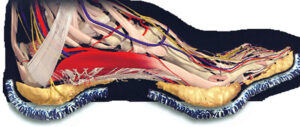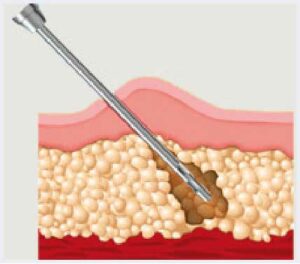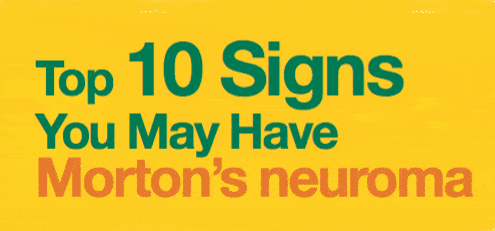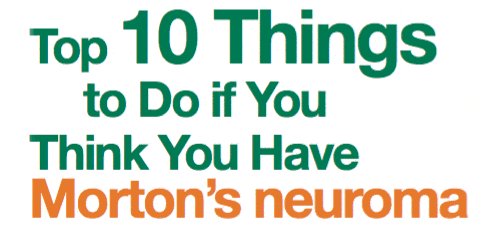
Fat Pad Atrophy of the Foot
One of the complications of Morton’s neuroma surgery and Morton’s neuroma corticosteroid injections is Fat Pad Atrophy. What is Fat Pad Atrophy?
We specialize in treating Morton’s neuroma and Plantar Fasciitis. We aim to cure your Morton’s neuroma or Plantar Fasciitis without surgery by using the most appropriate non-surgical procedure.
We believe we treat more Morton’s neuroma and Plantar Fasciitis patients than any other place in the country. We are the only center that we know of to provide such a wide spectrum of treatments for Morton’s neuroma so we can offer you the most appropriate non-surgical procedure to cure your Morton’s neuroma or Plantar Fasciitis. The services we provide range from simple medication to ultrasound guided ablation procedures to if necessary, surgery as a last resort. Click here to see a list of the non-surgical Morton’s neuroma procedures we offer.
Even if you’ve had Morton’s neuroma surgery and still have pain, we can treat you so you can get on with your life! (About 30% of our new patients are folks who have had Morton’s neuroma surgery and still have pain.)
By providing us with your information you are consenting to the collection and use of your information in accordance with our Terms of Service and Privacy Policy.
If you or someone you care about is suffering from Morton’s neuroma for longer than one month, or if your pain is so severe that you are having difficulty walking, running or just functioning, it’s time to seek professional help from a clinic that specializes in treating Morton’s neuroma that can provide a wide range of treatment options. Often, Morton’s neuroma creates a vicious cycle. It can cause changes in your posture, mood and activity level. Because movement is painful, you might start to avoid exercise and routine activities. This inactivity and avoidance of weight bearing on your affected foot leads to poor posture, weakening the muscles supporting your foot and ankle resulting in worse posture and continued foot problems – not to mention giving up on the activities you enjoy.
Do you sometimes feel like there’s a rock inside your shoe when you’re walking? But when you check to see what’s causing the discomfort, you can’t find any rock or pebble. If this sounds familiar, you might have a condition called Morton’s neuroma.
Morton’s neuroma is caused by the squeezing and irritation of a small nerve called the common plantar digital nerve which provides the sensation to the webspace between the toes. This nerve runs very close to an important supporting ligament of the forefoot, the transverse intermetatarsal ligament which runs across the foot bones.
Morton’s neuroma symptoms are typically on one side of the foot, usually between the third and fourth toes but the pain can extend outwards or even involve the whole side of the morton’s foot. You will not likely feel a lump in your neuroma foot, because a neuroma is generally small. You may feel a burning pain in your forefoot, and this pain can extend into the toes and be hard to find relief from Morton’s neuroma.
The pain is generally worse when wearing shoes or with activity, and can create the feeling of a pebble in the shoe. In addition, you may feel numbness and tingling in the toes as the condition affects the sensory aspects of the nerves in the foot. The episodes of pain can be intermittent. You may experience flare ups such as two attacks in a week, but then have no symptoms for over a year. However, the attacks tend to become more frequent as time progresses. Rarely, a foot may contain two separate Morton’s neuromas.
Ultrasound guided non-surgical procedures are the treatments of choice to cure Morton’s neuroma.
It is very common for conservative treatment and corticosteroid injections not to help in treating your Morton’s neuroma. Depending on your other medical conditions and an assessment by our one of our doctors, we perform:

We will develop a complete multi-disciplinary treatment plan to best treat your Morton’s neuroma (or Plantar Fasciitis.) We do not have a cookie cutter approach. Our philosophy is to treat your Morton’s neuroma with the most appropriate non-surgical treatment for you and only resort to surgery as a very last option.
Any surgery carries certain risks and so we offer a broad range of ultrasound guided procedures, which we can exhaust before recommending surgery. However we will recommend surgery if all non-surgical approaches have been exhausted or are inappropriate.
We are the only center (that we know of) to provide the widest spectrum of treatments available to treat Morton’s neuroma. This allows us to tailor your treatment so that it is right for you. We carefully consider all your previous treatments, your specific needs as well as all the options open to us to create an individual treatment plan that is best for you.

One of the complications of Morton’s neuroma surgery and Morton’s neuroma corticosteroid injections is Fat Pad Atrophy. What is Fat Pad Atrophy?

Many patients have come to use suffering from fat pad atrophy. In the past, we had no treatment for them. Now we have an excellent option: Lipostem. Lipostem is the painless injection of your own micronized fat into your fat pad done under ultrasound guidance.

It has been suggested that Morton’s neuroma represents an entrapment neuropathy in the tunnel formed by the Deep Transverse Metatarsal Ligament and the two metatarsals, and that during both the mid- stance and heel-off stages of walking, the interdigital nerve is pulled and compressed by the ligament.
By providing us with your information you are consenting to the collection and use of your information in accordance with our Terms of Service and Privacy Policy.


By providing us with your information you are consenting to the collection and use of your information in accordance with our Terms of Service and Privacy Policy.